Life at Liljestrand is the second segment of a four-part program, Modern Hawai‘i and the Liljestrand House, which coalesces the issues of immigration and design. In total, Modern Hawai‘i will pose the Liljestrand House as a cultural construct of the place, time and human aspiration which created it nearly 70 years ago in relation to its meaning and mission today.
Built on an extraordinary site with a 270-degree view of O`ahu for demanding clients with an exacting wish list, by an architect who saw architecture as a way to express local identity and reconcile disparate cultural legacies, Liljestrand House is an icon of Hawai’i’s mid-twentieth century architecture. But why did the Liljestrands decide to stay on O`ahu and make their home here after a generation of living and working in China? And what was it like to grow up in the product of an extraordinary collaboration between Howard and Betty Liljestrand and Vladimir Ossipoff? Hear some of the untold stories that counter perceptions of growing up in the “perfect” house; the quirks of living in an Ossipoff house; recollections from a lifetime of friendship with Ossipoff; and the lasting influence he has had on the children of two of his clients.
Bob Liljestrand was joined in conversation with Jane Marshall Goodsill. Moderated by Jack Gillmar.
Bob Liljestrand was seven years old when his parents began working with Ossipoff on their dream home and eleven when they moved in. After a childhood spent at Liljestrand House, a career in public health, and the restoration of his own historic home, Bob was eventually inspired to go back to school for a master’s degree in architecture for which Ossipoff wrote him a letter of recommendation.
Bob is President and Co-Founder of Liljestrand Foundation, created in 2007 with the mission of preserving Liljestrand House, the tropical modern masterpiece designed by Vladimir Ossipoff and making that preservation beneficial to the community.
Bob has lectured extensively on the Liljestrand House and Vladimir Ossipoff’s collaboration with his family at such institutions as the Pacific Club, AIA Headquarters in New York City, the German Museum of Architecture in Frankfurt and to students at the University of Hawai`i. In addition to his interest in architecture, Bob is an accomplished photographer and filmmaker. He produced three documentaries that were featured in a variety of film festivals, including the Hawai`i International Film Festival, American Film Festival Los Angeles and the Chicago Festival, where his film Moloka`i Solo won a Gold Plaque. His photography has been featured in a number of one-man gallery exhibitions and was published in the Los Angeles Times Sunday Supplement.
Author and historian Jane Marshall Goodsill was born and happily raised on O`ahu. Over the course of her career as a Licensed Professional Counselor, she listened to thousands of hours of personal stories and was fascinated by each one. After retirement she served for ten years on her county’s historical commission, during which time she refined the art of taking oral histories.
Jane’s book, Voices of Hawai`i, began as a labor of love, collecting oral histories from Hawai`i residents who had known her late father, a partner in a venerable Honolulu law firm. But avocation soon became vocation. As Jane’s joy in recording these life stories grew, so too did her pool of subjects whose oral histories, taken together, told a fascinating, behind-the-scenes take of Hawai`i’s journey from the World War II era into the 21st century. Gathered together under the themes of Island life: history, race, land use, art and music, philanthropy, development, and the spirit of aloha, the stories comprise a rare collective view of a society in transition.
Jane grew up in the Goodsill House, one of Vladimir Ossipoff’s famed residences which was built for her parents Marshall and Ruth Goodsill around 1954.
Jack Gillmar serves as a board member for Liljestrand Foundation. His appreciation for historic houses stems from growing up in Alfred Preis’ first residential design (1939) built in the center of Waikiki. Preis was one of Hawaii’s leading architects who worked collaboratively with Ossipoff on a number of projects. Jack is currently engaged with three associates in producing a book on the life and work of Alfred Preis.
Jack has undertaken a number of historic site restorations, including the interior of his Alfred Preis home and a partial restoration of the historic David Adler designed La Pietra (1920), now the Hawaii School for Girls, that borders Kapiolani Park at Diamond Head.
In addition to his interest in historic homes, Jack is dedicated to preserving Hawaiian heritage. Jack and his wife Janet established the Friendship Garden Foundation in 1978 to preserve and maintain the Friendship Garden (1928), a ten-acre National Historic Site in Kaneohe, Oahu. The Garden was originally the recreational component of the nation’s first intentional inter-racial subdivision.
Prior to his work in preservation, Jack served as Peace Corps volunteers on Pohnpei Island in Micronesia. He also taught history for 30 years at La Pietra School.

This program series was made possible through the generous support of Vilcek Foundation.

Hawai`i Council for the Humanities provided support for the initial planning stages of this program through the National Endowment for the Humanities (NEH) as part of the CARES Act of 2020.






